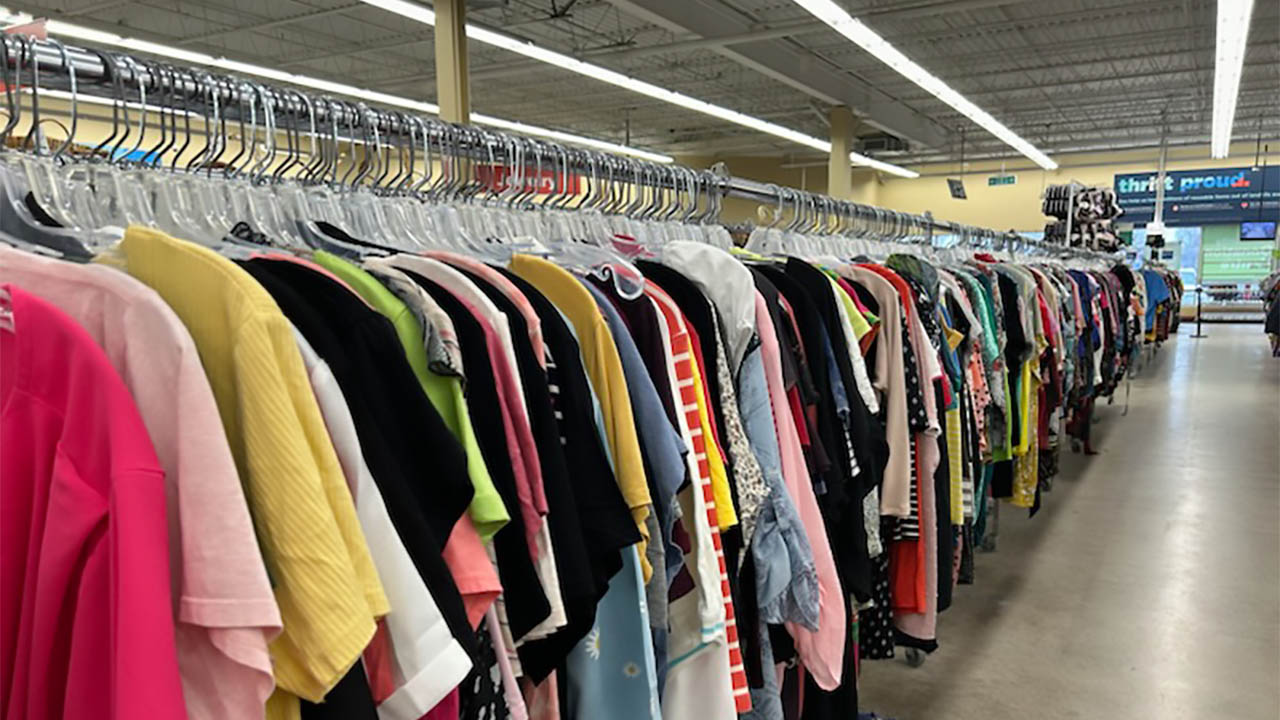Fashion at the expense of others
 CREDIT: FINCH NEVES
CREDIT: FINCH NEVESOnce a budget-friendly alternative to buying new, thrifting has now become profit-driven and unaffordable.
While its heyday may have passed, thrifted fashion is still incredibly popular. People will sift through the shelves of their local thrift store in search of hidden gems, relics from the past when clothes were made to last and wool was, perhaps, used a bit too often.
At first, this movement seemed fantastic. Why wouldn’t we want more people wearing used clothing, rather than having it go to waste? But once again, as seems to be an inescapable trend, capitalism has corrupted something great, as profit has become the focal point.
Thrift stores have been an essential part of life for low-income families, as they allow them to keep up with the rapid growth rate of children, without breaking the bank. Thrift stores also provided the unhoused with inexpensive clothing to stay warm in the cold.
For years, their clientele primarily consisted of individuals who could not afford to shop elsewhere, but with a new wave of customers that had money available, so have the price tags. Thrift store prices have risen at terrifying rates, making them inaccessible to the people that relied on them.
But they are a business, right? They have every right to try and make a profit, even if the situation is unfortunate for many. It isn’t like we see popular brands cutting their prices to be affordable, but this is different.
Thrift shops don’t create their merchandise or even purchase it most of the time. By marketing themselves as a pseudo charity, they manage to receive their stock through donations. People part with their belongings, or donate the belongings of passed loved ones, in hopes that they may help someone else, but instead, they end up lining the pockets of multi-millionaire CEOs.
While I have issues with our capitalist dystopia in general, that doesn’t mean I fault the business owners for taking part in it. The situation is entirely different, however, if you represent yourself as something that you are not to receive donations and then sell them for massive profit, while ignoring the people that have relied on you and funded your business for decades.
How can anyone be so callous? I feel like thrift stores and their pricing practices are a perfect representation of how disconnected wealthy people are from the people that fund their lavish lifestyles.
It is not like we should stop buying secondhand clothes to save them for those less fortunate or something either. There are more than enough to go around, and we should all consider ways that we can re-use rather than purchase new, in general. Plus, it is an added bonus that older styles frequently make comebacks.
There simply needs to be more transparency around how some of these businesses work because I sincerely doubt that as many people would donate if they knew it equated to little more than some white guy’s yacht fund.
If you choose to donate, research the different options available and find one that helps people, rather than profiting off of them. That way, you can slay that new fit without worrying it came at the expense of others.
Editorial opinions or comments expressed in this online edition of Interrobang newspaper reflect the views of the writer and are not those of the Interrobang or the Fanshawe Student Union. The Interrobang is published weekly by the Fanshawe Student Union at 1001 Fanshawe College Blvd., P.O. Box 7005, London, Ontario, N5Y 5R6 and distributed through the Fanshawe College community. Letters to the editor are welcome. All letters are subject to editing and should be emailed. All letters must be accompanied by contact information. Letters can also be submitted online by clicking here.















